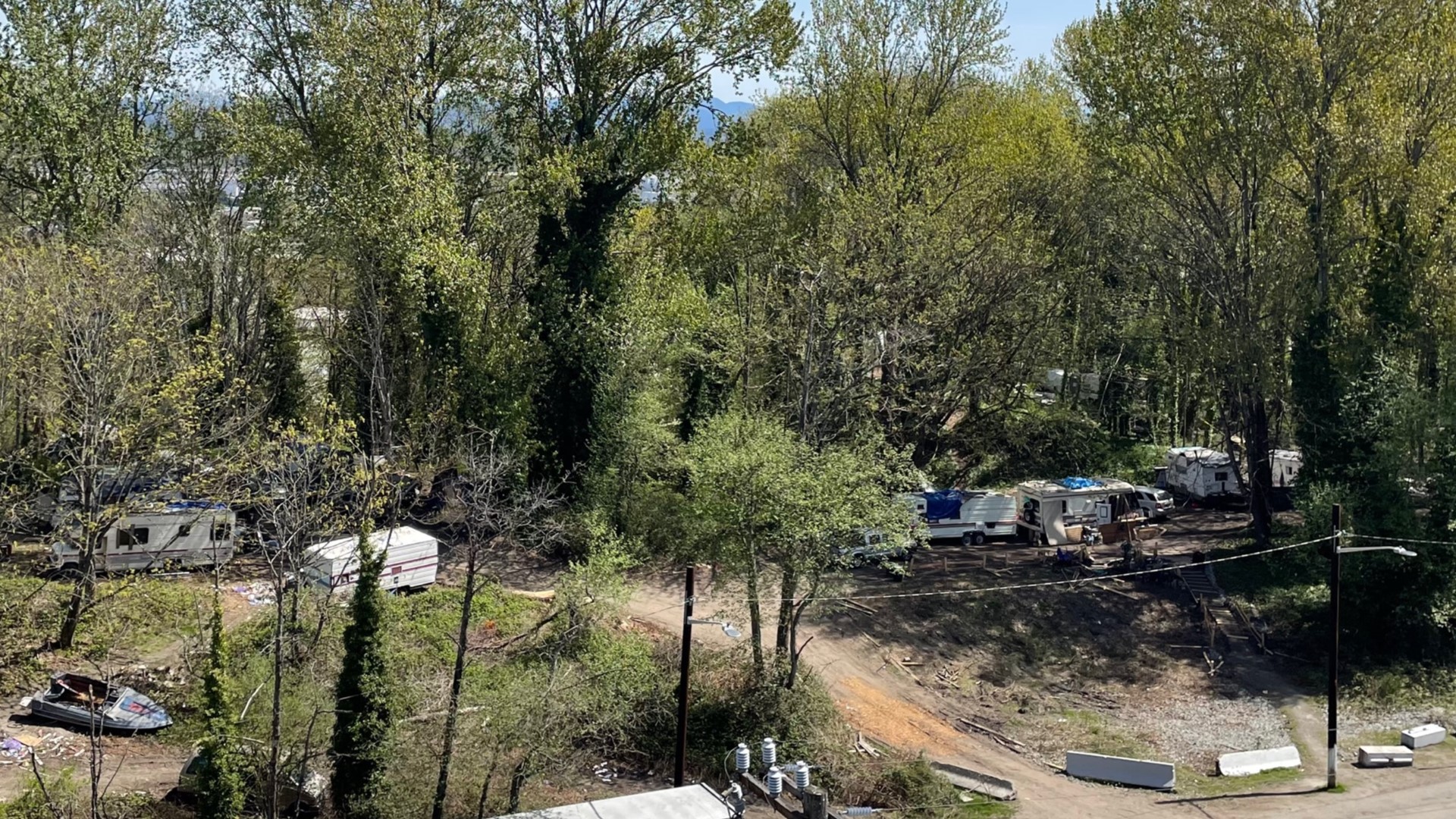SEATTLE — A sprawling homeless encampment is located in a wooded area off Myers Way near the border of Seattle and White Center.
It has become a daily nightmare for those who live nearby. Diane Radischat, president of her community association at SHAG Arrowhead Gardens Senior Living, is flabbergasted by the things she and her neighbors see.
"A new trailer was just brought in and disconnected by a white van, there's motorhomes over there," she said while looking into the encampment from the sixth rooftop terrace in her complex. "Lumber is being delivered to them. They're building staircases and fences. There was even a Bobcat there clearing property."
The encampment has steadily expanded since last summer according to Radischat. As of Thursday, around a dozen RVs were there along with several tents and makeshift homes. She recalls a sign being there two weeks ago that read "Homeless welcome, move in today."
Despite her efforts to bring the matter to the attention of local and state authorities, Governor Inslee, Mayor Harrell, and Chief of Seattle Police Captain Diaz, no concrete steps have been taken to address the situation.
"They're destroying the property and it's filthy. The garbage is adding up, nobody is cleaning it up," Radischat said. She also said behavior in the growing encampment is impacting the entire community.
"It's the gunshots, it's the fires and that's my personal concern. Something's going to blow up and it's going to kill people," Radischat said.
The area of land is supposed to be maintained by the Washington State Department of Transportation. The agency sent KING 5 a lengthy response as to why no action has been taken to clean it up.
"WSDOT crews are aware of the encampment at this location. Homelessness is a complex issue with no easy solutions that requires a coordinated approach for the safety of those who are in need, nearby residents, the traveling public and our workers who must access sites for inspections and repairs. In addition, access to resources that can make a difference are key in outreach to people living on right of ways or roadsides. We work closely with local partners, who have access to the resources and human services required to provide a pathway to temporary and permanent housing. There are four actions that allow encampments to be removed from WSDOT right of way:
1. The offering of shelter and services to people living there
2. Storage of their belongings
3. Safety and security for people on site and work crews
4. Restoration and cleanup of the property
"WSDOT’s responsibility and expertise is limited to the last action, the clean-up of right of way. As such we must rely on our partnerships with local jurisdictions, law enforcement and social services when addressing any area with an encampment. And, the overarching need is for creation of safe, secure housing options for people experiencing homelessness, which is well beyond the expertise, ability or funding of a transportation agency. We do engage our partners when there is an immediate safety threat at a particular encampment on our right of way, but given the number of encampments and our limited resources, we are unable to address all of them with the care, compassion and resources such work requires."
The residents of SHAG Arrowhead Gardens find themselves at the crossroads of a crisis with a lack of resources and bureaucratic red tape exacerbating the issues.
"Property damage has increased. We have theft. People coming in our buildings, sleeping in our lobbies, stairwells, laundry rooms," Radischat said.
"Older people are scared to come out of their houses now in the dark," Travis Maclin, another resident said.
Maclin says he's seen it over and over again. An area gets cleaned up and a month later, people are back to setting up camp. As long as people are allowed to live in the woods, Maclin says problems will persist.
"I'm home. I can't run from here. This is where I live at. What am I supposed to do?" Maclin asked in frustration.
In Seattle, a shortage of affordable housing, rising rents, and an increasing number of people living paycheck to paycheck have all contributed to the city's homelessness crisis. The pandemic has only made matters worse with many people losing their jobs and struggling to make ends meet.
Homelessness is a complex issue that requires a multifaceted approach to address. Solutions may include providing affordable housing, increasing access to mental health services and addiction treatment, and creating job training programs to help people get back on their feet.

